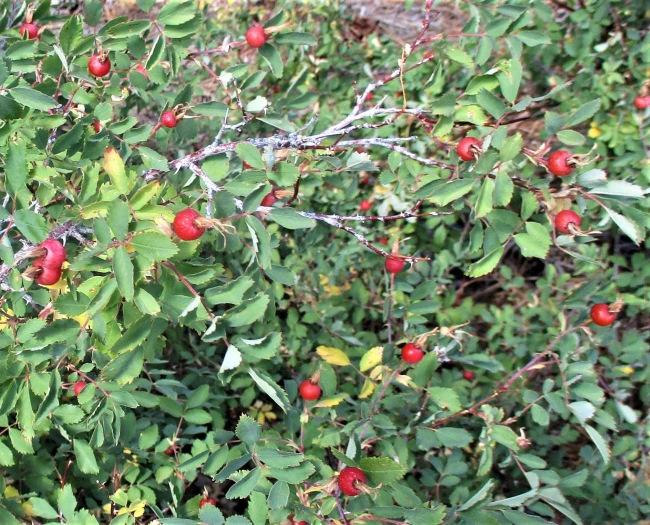Pearhip Rose
(Rosa arizonica)
Pearhip Rose (Rosa arizonica)
/
/

sprcrkwild
CC BY 4.0
Image By:
sprcrkwild
Recorded By:
Copyright:
CC BY 4.0
Copyright Notice:
Photo by: sprcrkwild | License Type: CC BY 4.0 | License URL: http://creativecommons.org/licenses/by/4.0/ | Rights Holder: sprcrkwild | Publisher: iNaturalist | Date Created: 2021-09-13T13:40:39-07:00 |










Estimated Native Range
Climate Requirements for Tuscaloosa, Alabama
| This Plant | Your Site | Plant Suitability for Your Location | ||
|---|---|---|---|---|
| • Precipitation | 8" - 39" | 57" | Aquatic | Aquatic |
| • High Temp. | 69°F - 97°F | 92°F | Your summer temperatures are normal for this plant. | Excellent |
| • Low Temp. | 2°F - 33°F | 33°F | OK, but your winter temperatures are warmer than normal for this plant | OK |
This plant may not grow well at your location - your precipitation is too high.
Summary
Rosa arizonica, commonly known as Pearhip Rose, is a deciduous shrub native to the chaparral, scrublands, and pine forests of the Southwestern USA, particularly in Arizona. It typically grows to a height and width of 3-6 feet (0.9-1.8 meters), featuring a compact and rounded form. The Pearhip Rose is adorned with pink flowers in the spring, which are moderately showy and give way to pear-shaped hips that are of interest in the fall. The foliage is also noteworthy for its blue-green hue, adding to the plant’s ornamental value.
Pearhip Rose is valued for its drought tolerance and ability to thrive in poor, well-drained soils, making it suitable for xeriscaping and naturalistic plantings. It is often used in native plant gardens, as a border shrub, or for erosion control on slopes. In cultivation, it prefers part shade but can tolerate full sun in cooler climates. While it requires low amounts of water once established, it benefits from occasional deep watering during prolonged dry periods. Gardeners should be aware that, like many roses, it can be susceptible to pests such as aphids and diseases like powdery mildew.CC BY-SA 4.0
Pearhip Rose is valued for its drought tolerance and ability to thrive in poor, well-drained soils, making it suitable for xeriscaping and naturalistic plantings. It is often used in native plant gardens, as a border shrub, or for erosion control on slopes. In cultivation, it prefers part shade but can tolerate full sun in cooler climates. While it requires low amounts of water once established, it benefits from occasional deep watering during prolonged dry periods. Gardeners should be aware that, like many roses, it can be susceptible to pests such as aphids and diseases like powdery mildew.CC BY-SA 4.0
Plant Description
- Plant Type: Shrub
- Height: 3-6 feet
- Width: 3-6 feet
- Growth Rate: Moderate
- Flower Color: Pink
- Flowering Season: Spring
- Leaf Retention: Deciduous
Growth Requirements
- Sun: Part Shade
- Water: Low
- Drainage: Fast
Common Uses
Bee Garden, Bird Garden, Butterfly Garden, Fragrant, Groundcover, Low Maintenance
Natural Habitat
Native to chaparral, scrublands, and pine forests of the Southwestern USA
Other Names
Common Names: Wood’s Rose, Arizona Rose
Scientific Names: Rosa arizonica, Rosa woodsii var. arizonica, Rosa woodsii subsp. arizonica, Rosa bakeri
GBIF Accepted Name: Rosa woodsii var. arizonica (Rydb.) W.H.Lewis